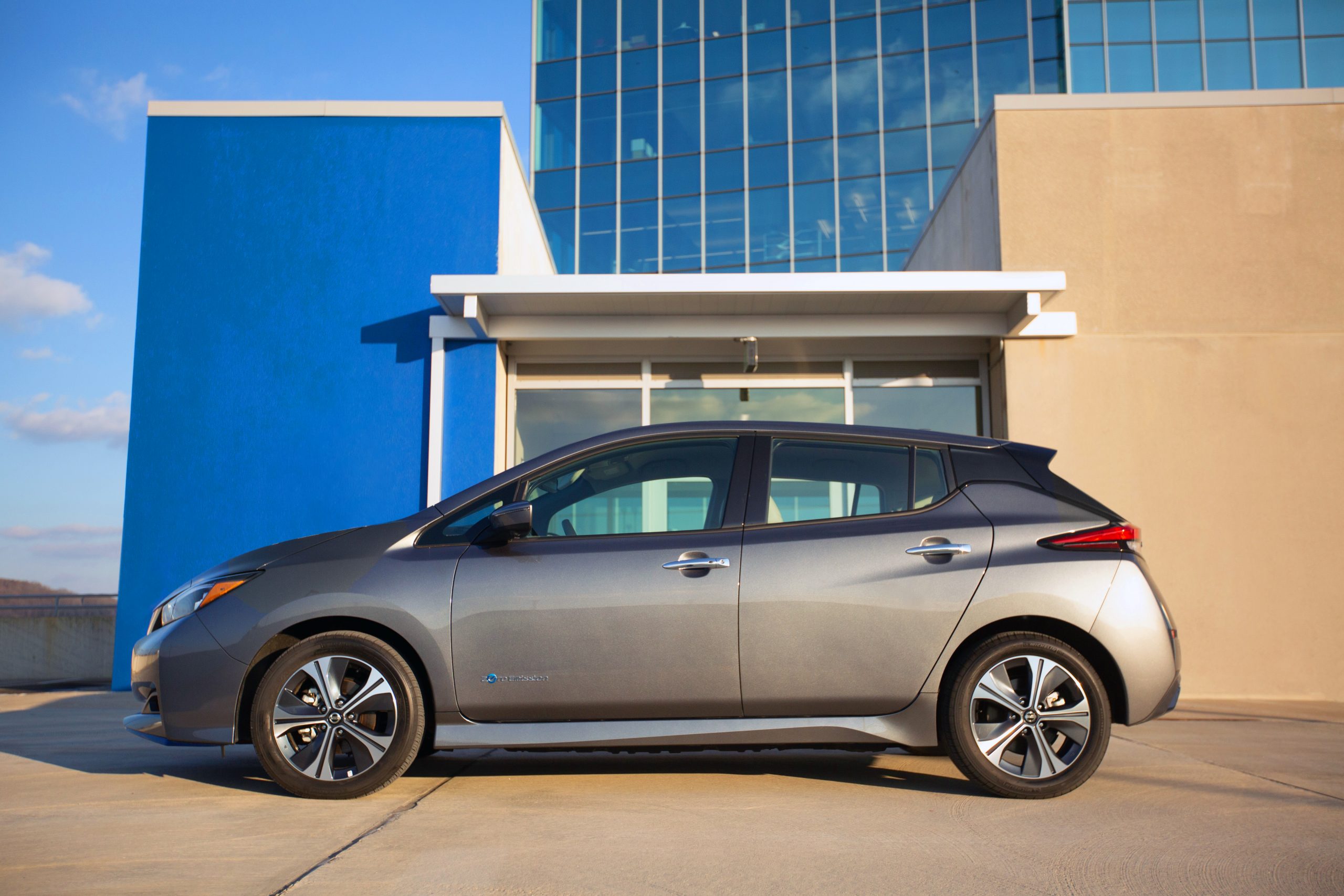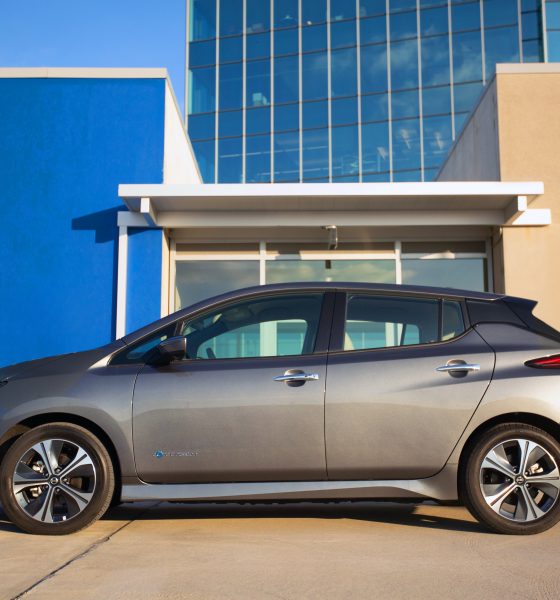Nissan’s 2022 LEAF has established itself as the most affordable electric vehicle in the U.S. market with the rollout of the newest models. The base LEAF S has an unbelievably low starting price of just $27,400 before incentives, with federal tax credits potentially bringing the cost of the vehicle down to the sub-$20,000 level. After federal incentives, all five of the 2022 models will be under $30,000.
The best bang for your buck for an electric vehicle will be the Nissan LEAF S, starting at $27,400, a drop of $4,245 from the 2021 edition of the all-electric hatchback. Utilizing a CHAdeMO fast-charging connector, the 149 miles of all-electric range is far from the highest available on the market but still reasonable for owners with a short commute or less demanding driving schedules. As other manufacturers, like Tesla, Ford, and Chevrolet, have all offered significantly more robust models in terms of range, technology, efficiency, and performance, the LEAF is no longer the cream-of-the-crop for EVs. However, it still offers significantly greater advantages than an ICE vehicle, like an opportunity to capture a $7,500 discount due to federal tax credits, the availability to charge at home, and significantly less greenhouse gas emissions.
Credit: Nissan
Equipping a 40 kWh battery pack, the LEAF S offers basic features like a 110 kW AC electric motor, Automatic Emergency Braking, Apple CarPlay integration, and a cozy interior. If the low range rating isn’t something you’d be interested in dealing with, there are four other models to choose from: the SV ($28,800, $21,300 after incentives, S Plus ($32,400, $24,900 after incentives), SV Plus ($35,400, $27,900 after incentives), and SL Plus ($37,400, $29,900 after incentives). Exact range ratings have not yet been released by Nissan, nor by FuelEconomy.gov. However, Nissan says that the EPA estimated range of its S Plus variant will top out at 226 miles.
Each of the variants experienced price drops when compared to last year’s models. The largest price decrease was applied by the fully-loaded SL Plus variant, which dropped $6,545 from the 2020 model.
The availability of so many different LEAF variants offers every potential customer the opportunity to select the perfect EV for them while not necessarily breaking the bank. Sure, you won’t get a cool semi-autonomous driving option or nearly 400 miles of all-electric range. However, if an electric vehicle is your first way to join the movement toward sustainable energy, then the LEAF might be the perfect car to help appeal to potential buyers.
Nissan currently receives batteries for the LEAF from Envision AESC. The company recently signed a battery recycling deal with former Tesla executive J.B. Straubel’s Redwood Materials, giving owners peace of mind that their battery packs will be sustainably handled after the vehicle’s time on the road has come to a close.
Don’t hesitate to contact us with tips! Email us at tips@teslarati.com, or you can email me directly at joey@teslarati.com.

News
Tesla FSD fleet is nearing 7 billion total miles, including 2.5 billion city miles
As can be seen on Tesla’s official FSD webpage, vehicles equipped with the system have now navigated over 6.99 billion miles.

Tesla’s Full Self-Driving (Supervised) fleet is closing in on almost 7 billion total miles driven, as per data posted by the company on its official FSD webpage.
These figures hint at the massive scale of data fueling Tesla’s rapid FSD improvements, which have been quite notable as of late.
FSD mileage milestones
As can be seen on Tesla’s official FSD webpage, vehicles equipped with the system have now navigated over 6.99 billion miles. Tesla owner and avid FSD tester Whole Mars Catalog also shared a screenshot indicating that from the nearly 7 billion miles traveled by the FSD fleet, more than 2.5 billion miles were driven inside cities.
City miles are particularly valuable for complex urban scenarios like unprotected turns, pedestrian interactions, and traffic lights. This is also the difference-maker for FSD, as only complex solutions, such as Waymo’s self-driving taxis, operate similarly on inner-city streets. And even then, incidents such as the San Francisco blackouts have proven challenging for sensor-rich vehicles like Waymos.
Tesla’s data edge
Tesla has a number of advantages in the autonomous vehicle sector, one of which is the size of its fleet and the number of vehicles training FSD on real-world roads. Tesla’s nearly 7 billion FSD miles then allow the company to roll out updates that make its vehicles behave like they are being driven by experienced drivers, even if they are operating on their own.
So notable are Tesla’s improvements to FSD that NVIDIA Director of Robotics Jim Fan, after experiencing FSD v14, noted that the system is the first AI that passes what he described as a “Physical Turing Test.”
“Despite knowing exactly how robot learning works, I still find it magical watching the steering wheel turn by itself. First it feels surreal, next it becomes routine. Then, like the smartphone, taking it away actively hurts. This is how humanity gets rewired and glued to god-like technologies,” Fan wrote in a post on X.
News
Tesla starts showing how FSD will change lives in Europe
Local officials tested the system on narrow country roads and were impressed by FSD’s smooth, human-like driving, with some calling the service a game-changer for everyday life in areas that are far from urban centers.

Tesla has launched Europe’s first public shuttle service using Full Self-Driving (Supervised) in the rural Eifelkreis Bitburg-Prüm region of Germany, demonstrating how the technology can restore independence and mobility for people who struggle with limited transport options.
Local officials tested the system on narrow country roads and were impressed by FSD’s smooth, human-like driving, with some calling the service a game-changer for everyday life in areas that are far from urban centers.
Officials see real impact on rural residents
Arzfeld Mayor Johannes Kuhl and District Administrator Andreas Kruppert personally tested the Tesla shuttle service. This allowed them to see just how well FSD navigated winding lanes and rural roads confidently. Kruppert said, “Autonomous driving sounds like science fiction to many, but we simply see here that it works totally well in rural regions too.” Kuhl, for his part, also noted that FSD “feels like a very experienced driver.”
The pilot complements the area’s “Citizen Bus” program, which provides on-demand rides for elderly residents who can no longer drive themselves. Tesla Europe shared a video of a demonstration of the service, highlighting how FSD gives people their freedom back, even in places where public transport is not as prevalent.
What the Ministry for Economic Affairs and Transport says
Rhineland-Palatinate’s Minister Daniela Schmitt supported the project, praising the collaboration that made this “first of its kind in Europe” possible. As per the ministry, the rural rollout for the service shows FSD’s potential beyond major cities, and it delivers tangible benefits like grocery runs, doctor visits, and social connections for isolated residents.
“Reliable and flexible mobility is especially vital in rural areas. With the launch of a shuttle service using self-driving vehicles (FSD supervised) by Tesla in the Eifelkreis Bitburg-Prüm, an innovative pilot project is now getting underway that complements local community bus services. It is the first project of its kind in Europe.
“The result is a real gain for rural mobility: greater accessibility, more flexibility and tangible benefits for everyday life. A strong signal for innovation, cooperation and future-oriented mobility beyond urban centers,” the ministry wrote in a LinkedIn post.
News
Tesla China quietly posts Robotaxi-related job listing
Tesla China is currently seeking a Low Voltage Electrical Engineer to work on circuit board design for the company’s autonomous vehicles.

Tesla has posted a new job listing in Shanghai explicitly tied to its Robotaxi program, fueling speculation that the company is preparing to launch its dedicated autonomous ride-hailing service in China.
As noted in the listing, Tesla China is currently seeking a Low Voltage Electrical Engineer to work on circuit board design for the company’s autonomous vehicles.
Robotaxi-specific role
The listing, which was shared on social media platform X by industry watcher @tslaming, suggested that Tesla China is looking to fill the role urgently. The job listing itself specifically mentions that the person hired for the role will be working on the Low Voltage Hardware team, which would design the circuit boards that would serve as the nervous system of the Robotaxi.
Key tasks for the role, as indicated in the job listing, include collaboration with PCB layout, firmware, mechanical, program management, and validation teams, among other responsibilities. The role is based in Shanghai.
China Robotaxi launch
China represents a massive potential market for robotaxis, with its dense urban centers and supportive policies in select cities. Tesla has limited permission to roll out FSD in the country, though despite this, its vehicles have been hailed as among the best in the market when it comes to autonomous features. So far, at least, it appears that China supports Tesla’s FSD and Robotaxi rollout.
This was hinted at in November, when Tesla brought the Cybercab to the 8th China International Import Expo (CIIE) in Shanghai, marking the first time that the autonomous two-seater was brought to the Asia-Pacific region. The vehicle, despite not having a release date in China, received a significant amount of interest among the event’s attendees.









